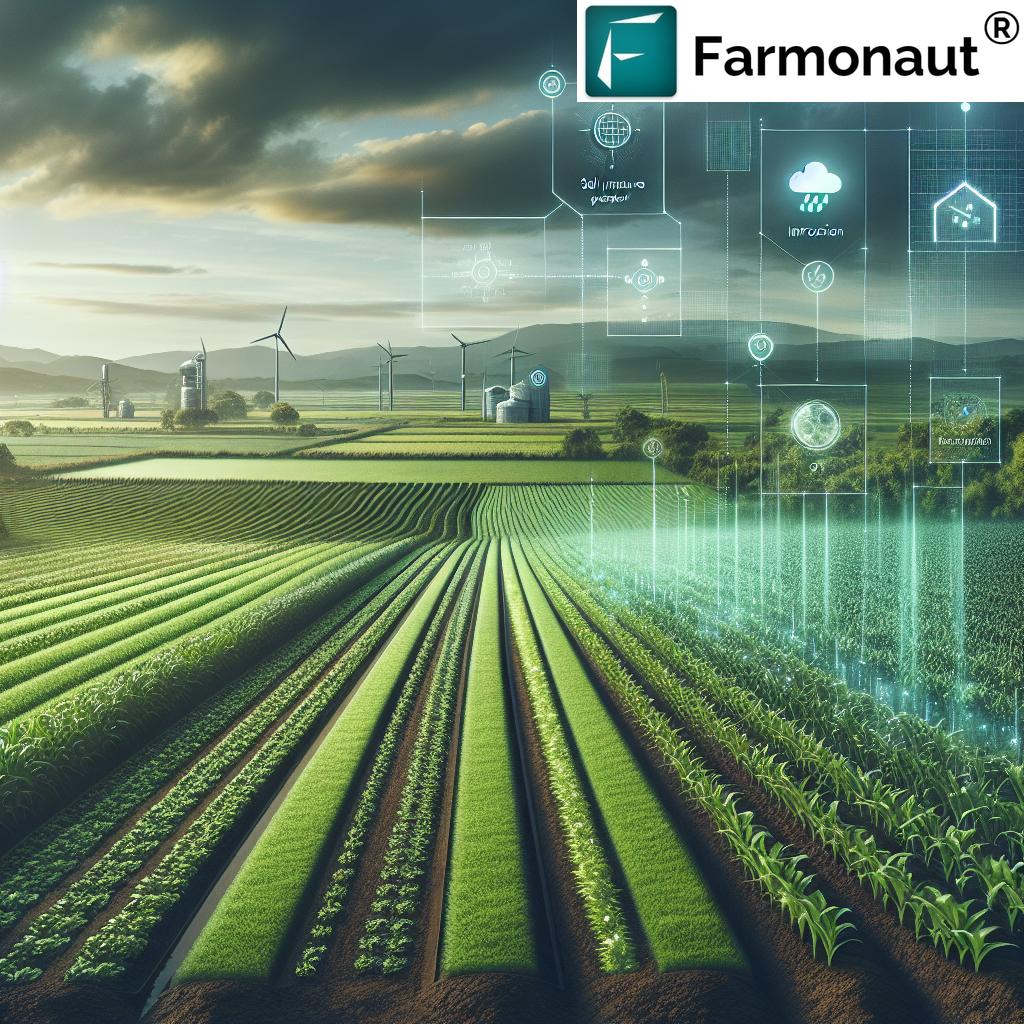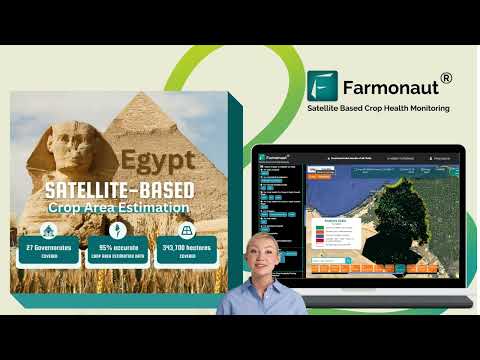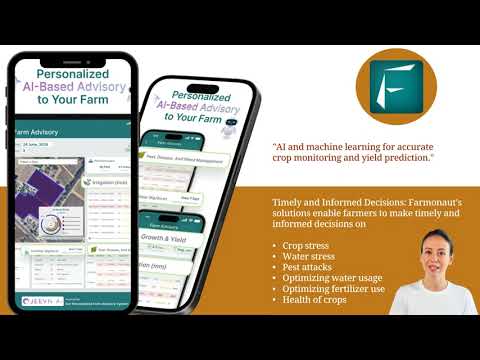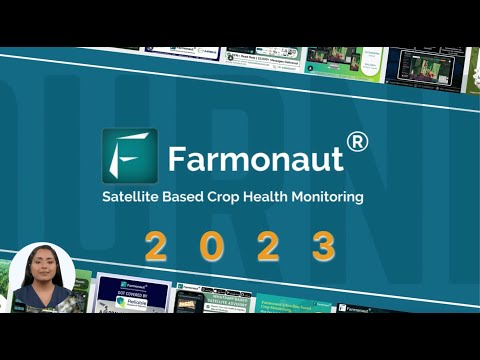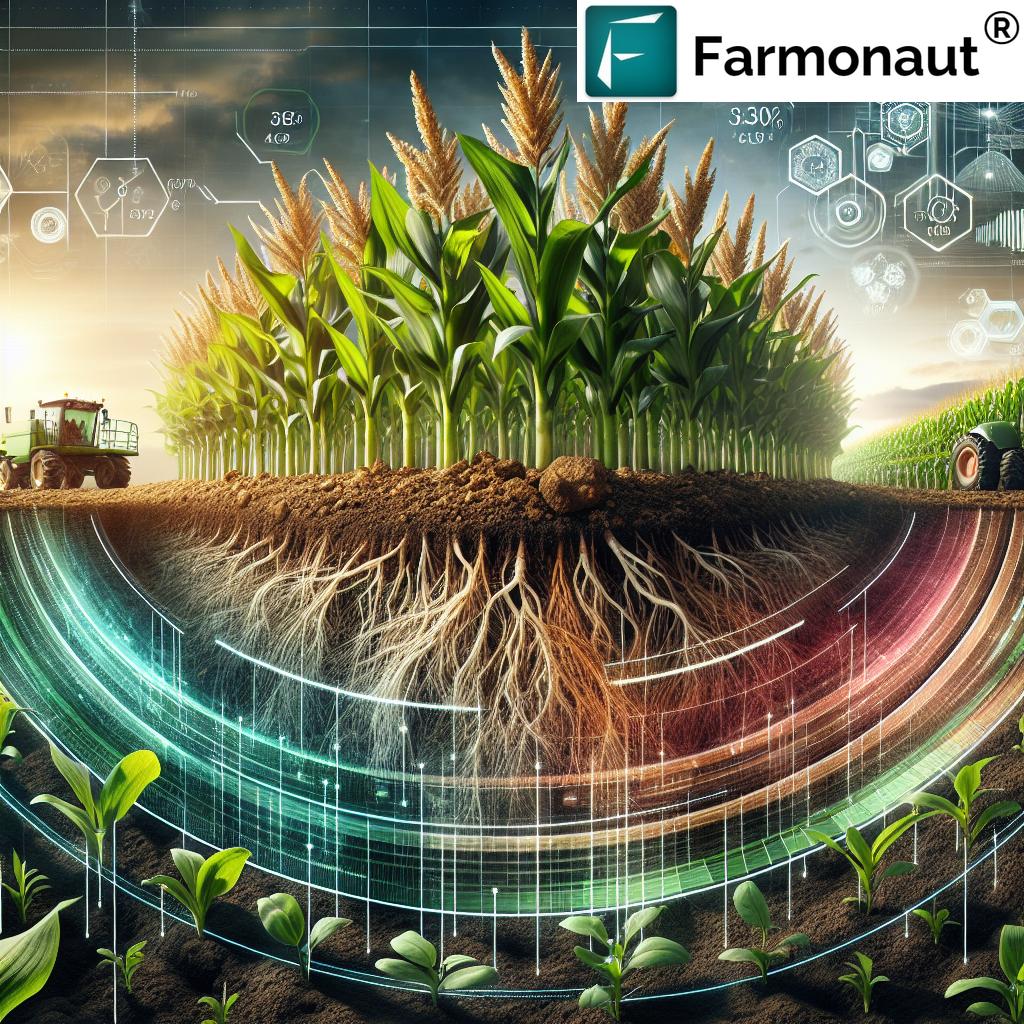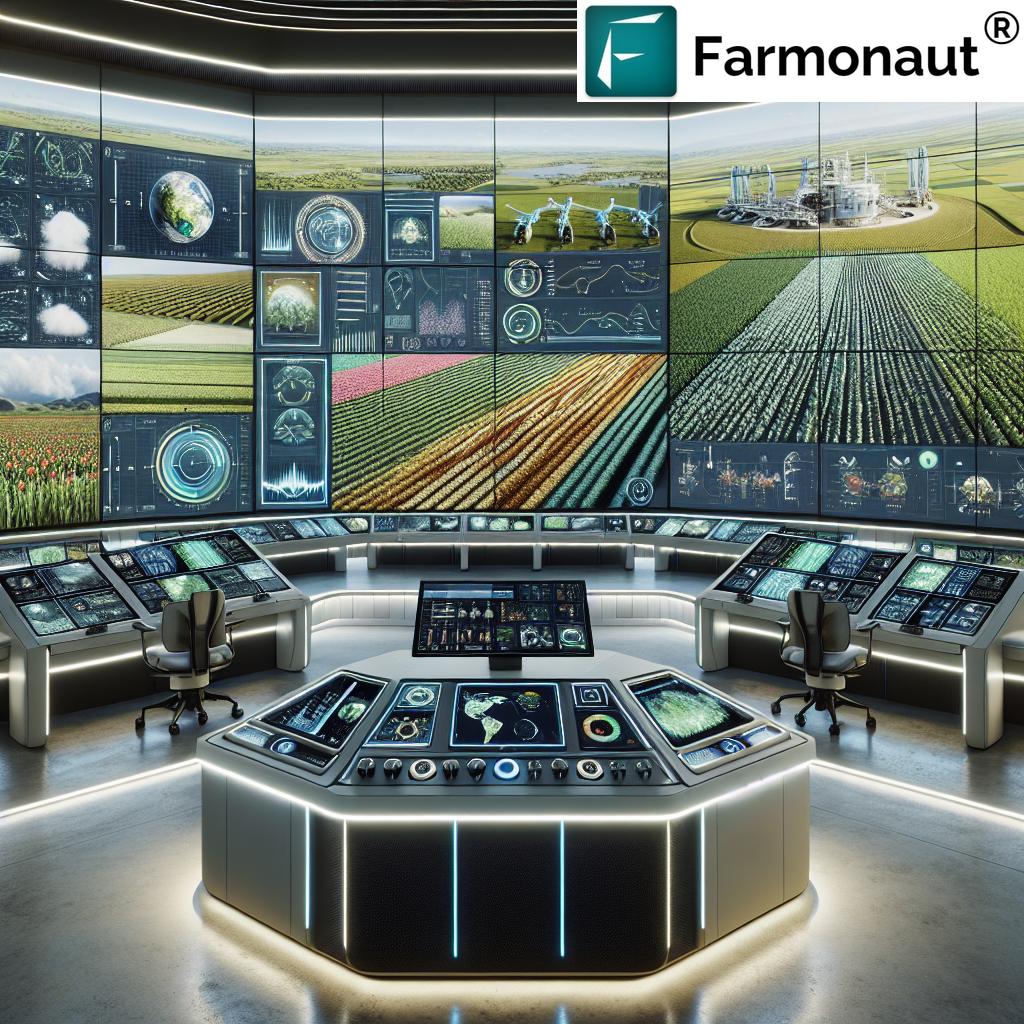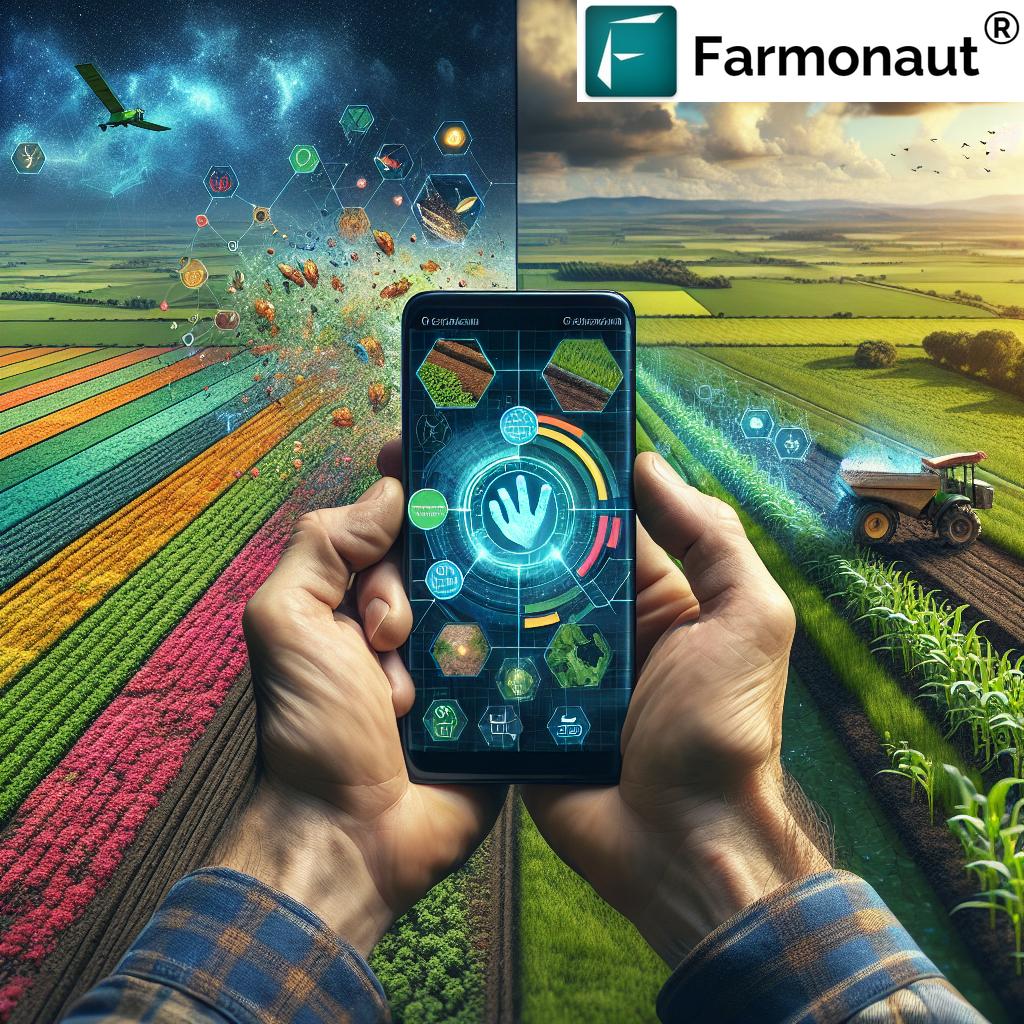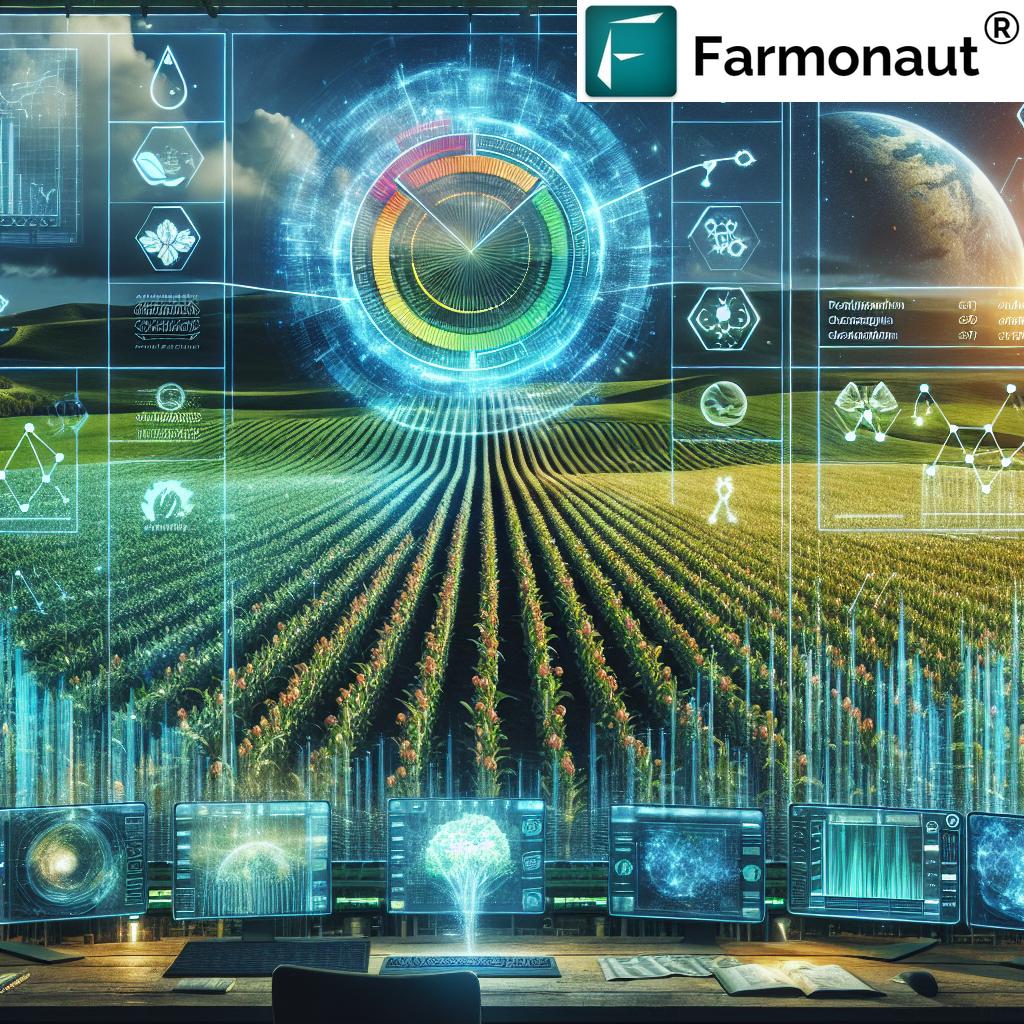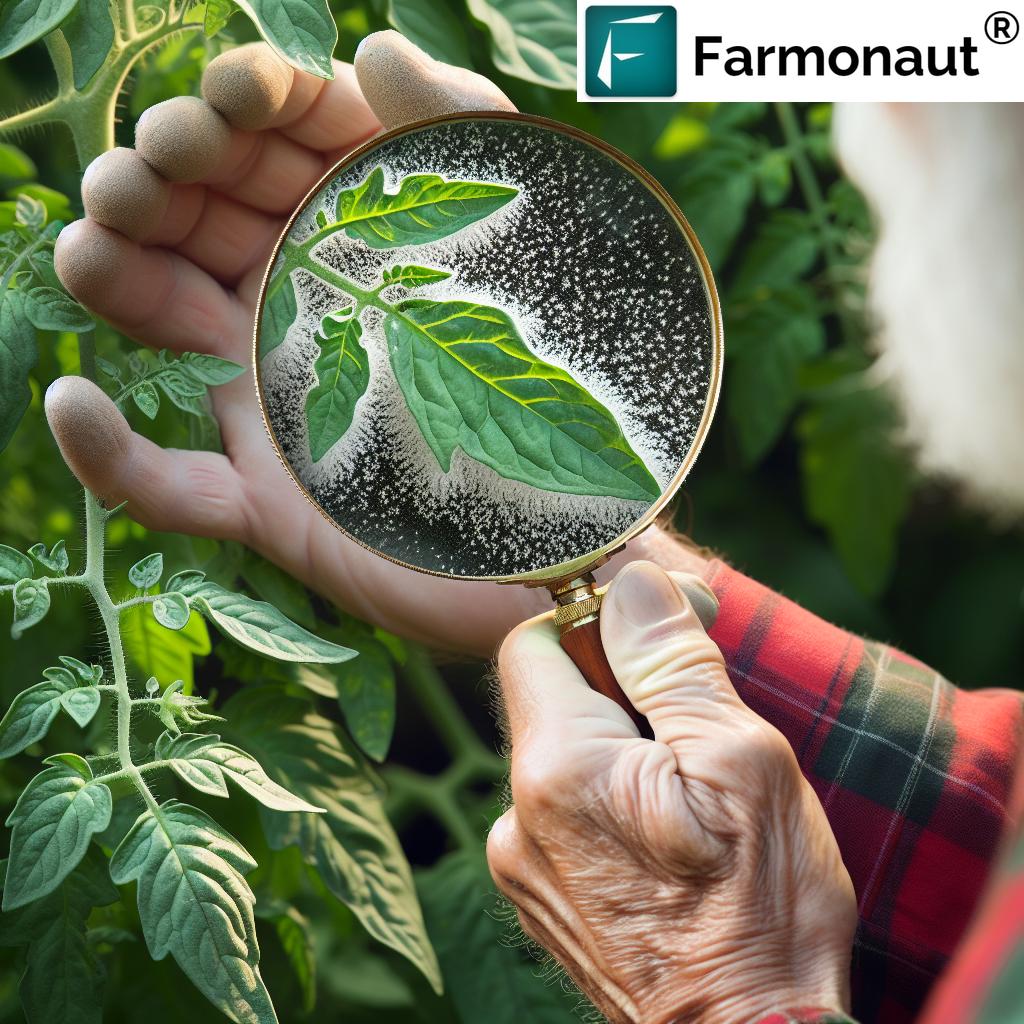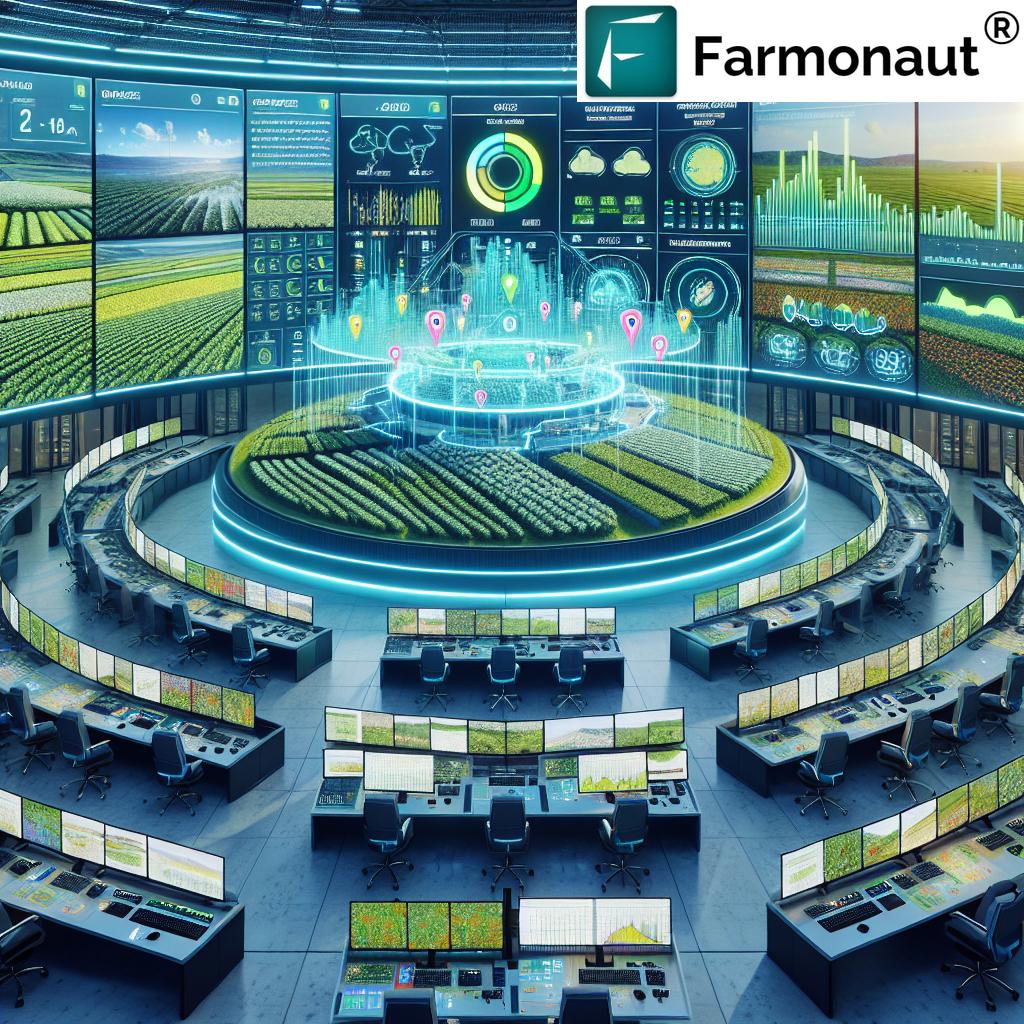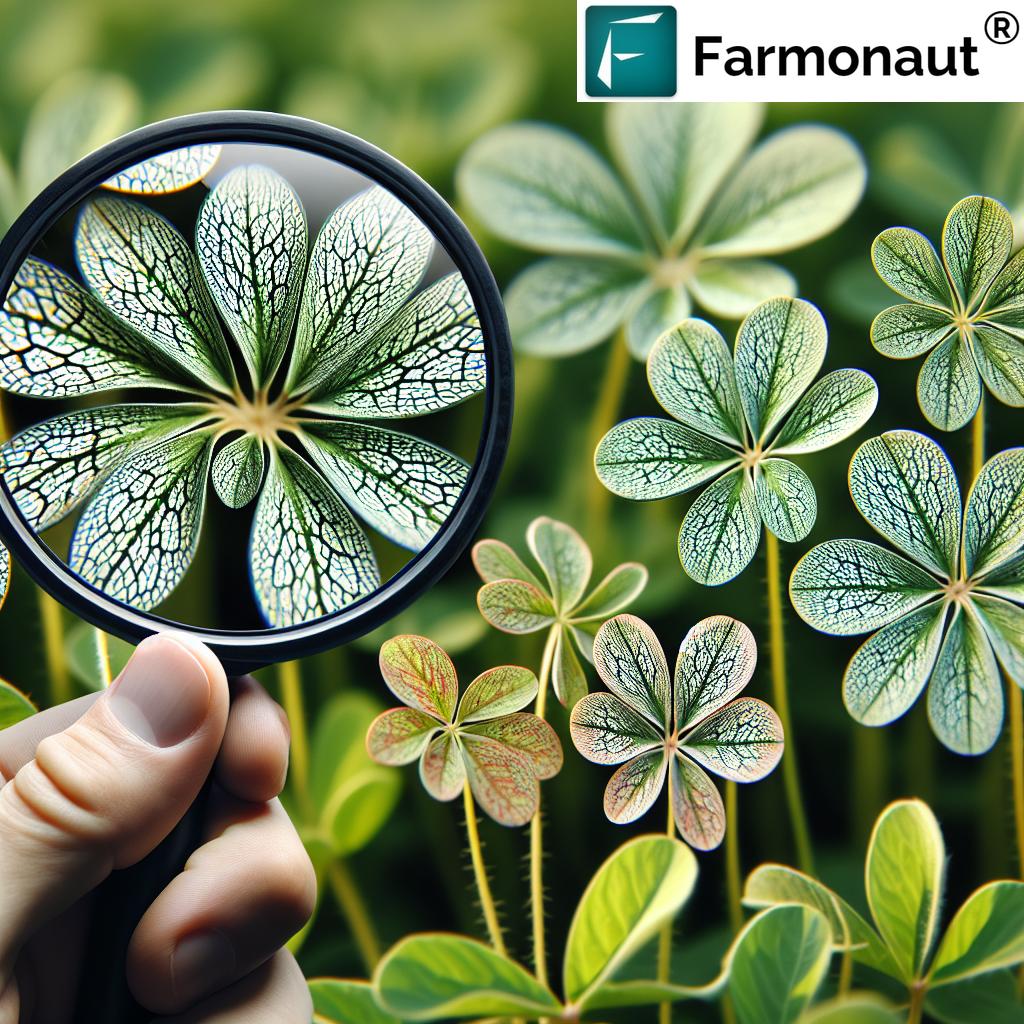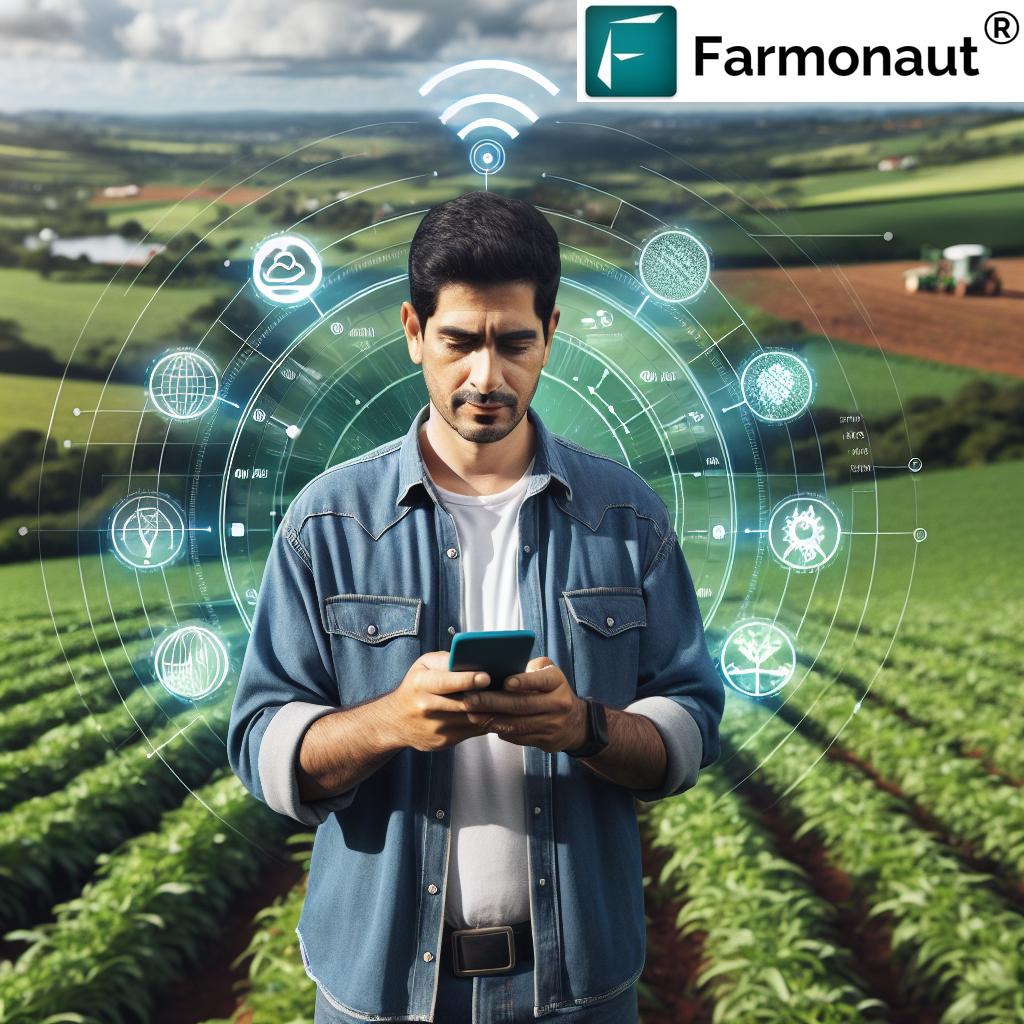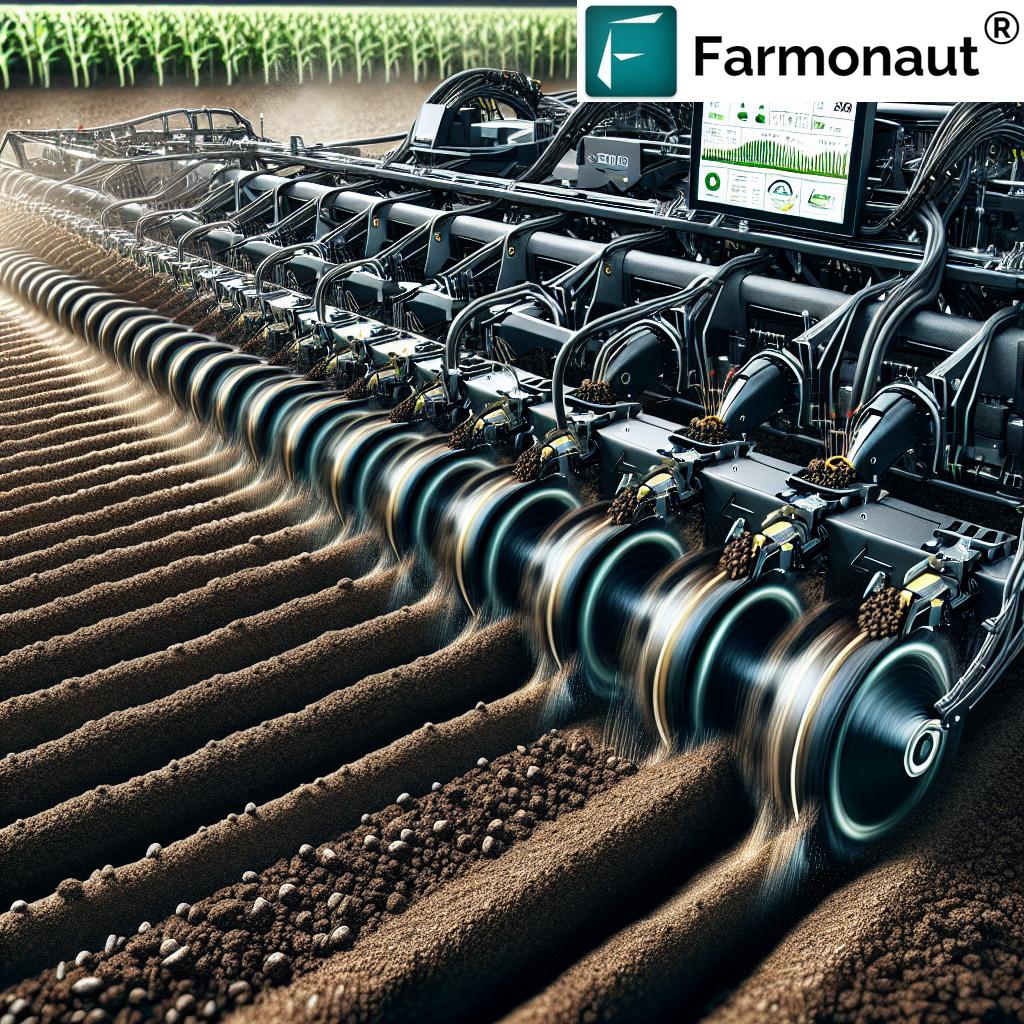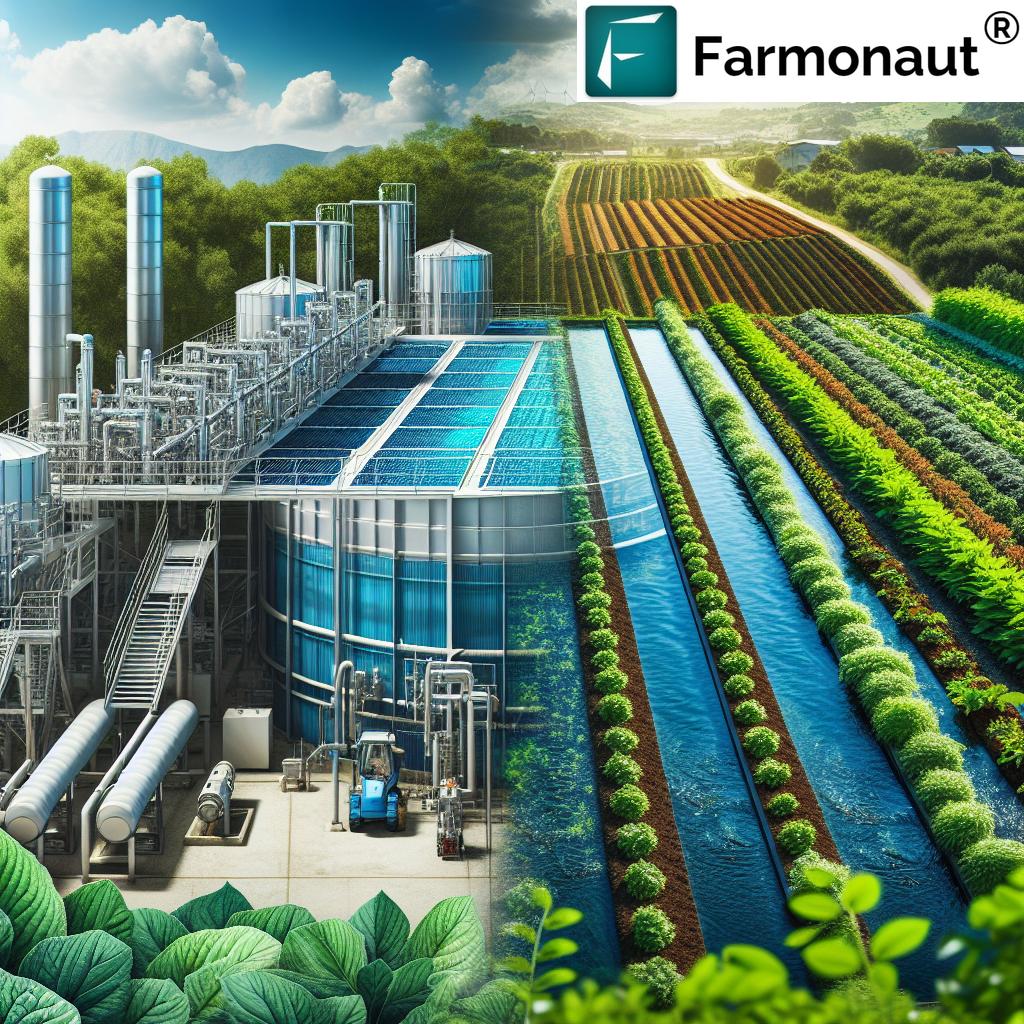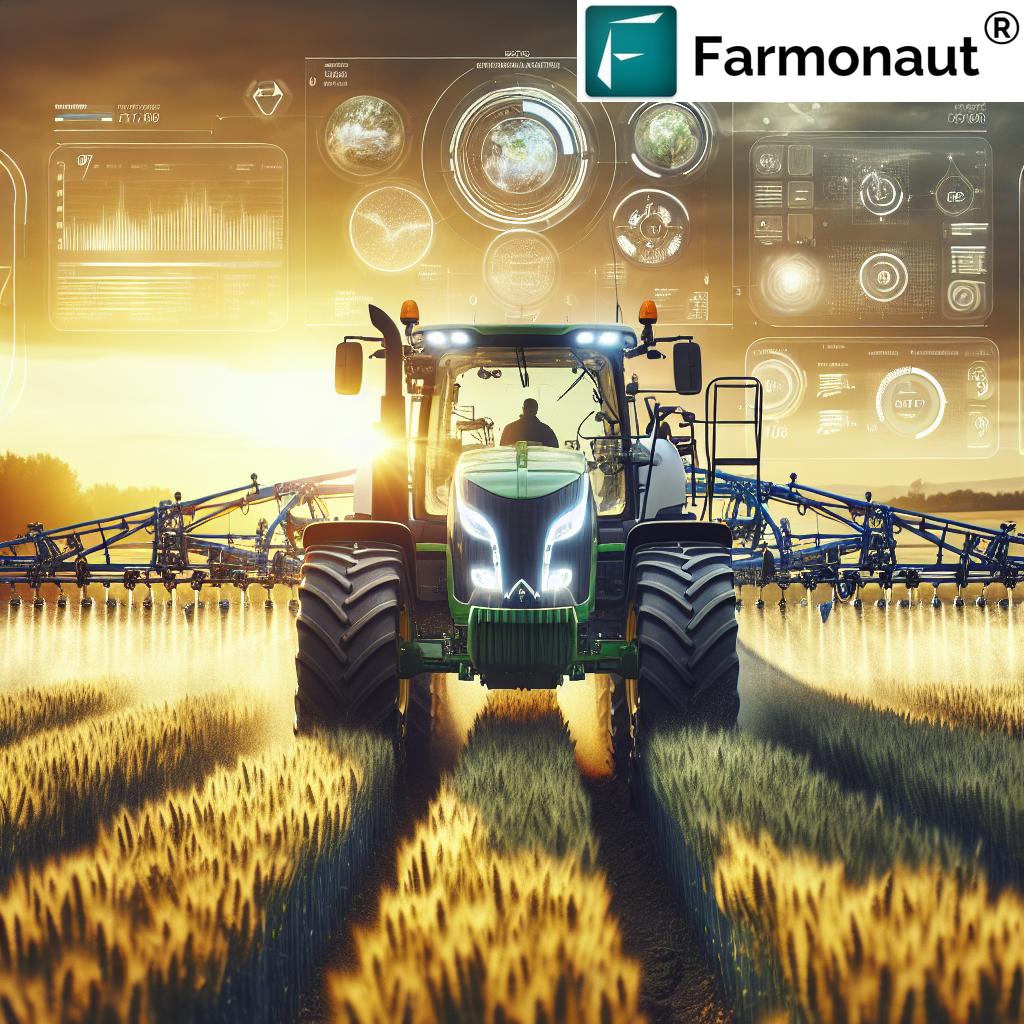IoT Farming Solutions: 7 Shocking Hacks for Efficiency
Table of Contents
- Introduction: IoT in Agriculture & Smart Farming Overview
- Why IoT Farming Solutions Matter
- The 7 Shocking Hacks for Efficiency
- Comparison Table: IoT Hacks & Results
- Harnessing Agricultural Data Analytics
- Farmonaut’s Role: Pioneering Accessible IoT Farming Solutions
- Challenges and Considerations for IoT Farming Implementation
- Future Outlook: The Road Ahead for IoT in Agriculture
- FAQs
- Conclusion
“IoT sensors can reduce water usage in precision agriculture by up to 30%, optimizing irrigation and conserving resources.”
Introduction: IoT in Agriculture & Smart Farming Overview
The Internet of Things (IoT) is dramatically reshaping the landscape of global agriculture. As we witness a boom in interconnected sensors, real-time data analytics, and automated decision-making systems, both small farmers and large agribusinesses are reimagining efficiency and productivity. “IoT in agriculture,” sometimes called smart farming solutions, leverages an extensive network of smart devices — from ground sensors and weather stations to advanced aerial drones and automated equipment — to monitor, transmit, and analyze precise data regarding crops, livestock, and resource usage.
At its core, this technological approach empowers us to make sound, real-time decisions to optimize virtually every detail of farm management. Sustainability, efficiency, and higher crop yields are no longer distant goals — they are today’s reality, fueled by cutting-edge precision agriculture technology.
Why IoT Farming Solutions Matter
Traditional farming practices, while time-tested, often lack the flexibility and data granularity now required to meet rising food demands and environmental pressures. Enter IoT in agriculture — an innovative blend of sensors, devices, analytics, and automation.
By integrating smart systems, we gain the ability to:
- Monitor field and crop health in real-time
- Dramatically reduce resource wastage
- Boost overall yields and profitability
- Enable sustainability by conserving water, soil nutrients, and energy
- Manage risk and adapt faster to changing conditions
- Create traceable, transparent, and efficient supply chains
When we say shocking hacks for efficiency, we mean the practical transformations that smart IoT systems bring — not only quick wins, but long-lasting improvements in productivity, risk reduction, and environmental stewardship.
The 7 Shocking Hacks for Efficiency in IoT Farming Solutions
Let’s break down the seven most game-changing innovations in smart farming, IoT deployment, and precision agriculture technology. These solutions are empowering us to redefine what’s possible on the farm, in the greenhouse, and across the supply chain.
“Smart farming solutions can increase crop yields by as much as 20% through real-time data-driven decisions.”
1. Precision Agriculture Technology: Revolutionizing Crop Management
Precision agriculture — sometimes called variable rate farming — is built on the backbone of IoT devices, interlinked field sensors, and advanced analytics platforms. By utilizing agriculture IoT sensors, we can measure key field parameters like soil moisture, temperature, and nutrient levels.
This approach allows us to manage variability across a field, deliver customized treatments, and minimize waste. AI-powered software and satellite data (such as those available on Farmonaut’s platform) help us target fertilizer and irrigation only where it’s needed, yielding significant efficiency and sustainability gains.
- Benefits: Maximizes output per input, reduces resources usage, lowers ecological footprint, and dramatically increases yields.
- Use Cases: Targeted irrigation, variable rate fertilization, automated pest detection.
Explore the power of farm management powered by satellite imagery and smart advisories, available in real time. Farmonaut’s Crop, Plantation, and Forest Advisory tools help you make timely decisions for all types of crops — from wheat fields in Punjab to orchards in California.
2. Smart Irrigation Systems: Delivering Water Efficiency & Conservation
Water is one of the most precious — and costly — resources in modern agriculture. Smart irrigation systems, using real-time soil moisture sensors and weather data, automate watering schedules so we provide water precisely when and where it’s needed.
Key features include:
- Automated timers that synchronize with local weather apps
- Sensors that detect rainfall and soil saturation, halting unnecessary irrigation
- Remote monitoring and adjustment — no need to be physically present
By integrating weather forecasts and field moisture data, we prevent both under- and over-irrigation, protecting crop health and reducing resource wastage. According to recent studies, IoT-based irrigation can cut water use by up to 30%— an enormous win for sustainable farming practices.
3. Crop Monitoring Systems & Disease Detection: Eyes Everywhere
Healthy crops are the backbone of any farm’s profitability. IoT-powered crop monitoring systems — including ground sensors and advanced drones — enable us to keep a watchful eye on plant health.
Key technologies:
- Multispectral and thermal sensors (including satellite data from Farmonaut) distinguish between healthy and stressed plants — sometimes days before symptoms are visible to the naked eye.
- Automated disease and pest detection allows for prompt interventions.
- Integration of image analytics for real-time measurement of chlorophyll levels, leaf area, and canopy cover.
These solutions facilitate early detection of diseases, nutrient deficiencies, and stress, allowing for targeted remedies, minimized losses, and optimal input application. Modern crop monitoring also supports remote diagnostics, enhancing decision-making even when farmers are far from the field.
Want to unlock the next level of monitoring? Discover Farmonaut’s satellite-based real-time crop health monitoring platform — one of the world’s most accessible, affordable ways to analyze field data from anywhere.
4. Livestock Management Solutions: Keeping Herds Healthy & Secure
Livestock health directly impacts farm efficiency and profits. With IoT-driven livestock management solutions, we can continuously monitor health, track movement, and prevent loss or disease.
Tools and approaches:
- Wearable sensors and smart tags to monitor vital signs, activity, eating, and rumination patterns, enabling us to detect illness or stress early.
- GPS/geofencing devices notify us instantly if animals leave designated zones or show erratic behavior, safeguarding welfare and assets.
- Data aggregation from multiple sensors enables us to adjust feed, manage breeding cycles, and optimize herd productivity.
These interconnected systems lead to fewer losses, less disease, improved animal welfare, and streamlined resource management for large and small herds alike.
For farms with complex labor or machinery logistics, learn how you can streamline operations using Farmonaut’s Fleet & Resource Management tools for real-time tracking, allocation, and utilization of vehicles and farm equipment.
5. Farm Automation Devices & Robotics: Transforming Operations
Automation is no longer futuristic — it’s here, and it’s practical. Modern farm automation devices and robotics, powered by IoT connectivity, are able to perform labor-intensive tasks such as planting, weeding, and harvesting efficiently, accurately, and around the clock.
Innovations in this space include:
- Autonomous tractors and planting machinery remotely controlled through apps or web platforms
- Robotic sprayers that optimize application rates based on live field data
- Weeding and harvesting robots that adapt to real-time soil and weather conditions
Farm automation ensures constant optimal conditions, reduces payroll, minimizes human error, and lets us scale operations without scaling cost. Combined with AI-driven advisories (for example, those available on Farmonaut’s Jeevn AI platform), we can align every phase of work to maximize results.
6. Smart Greenhouses: Perfecting Controlled Environments
A smart greenhouse combines IoT field sensors, automated temperature control, and advanced monitoring to guarantee optimal growing conditions throughout the year.
Key features include:
- Real-time data collection on moisture, temperature, humidity, and light exposure from IoT sensors placed throughout the greenhouse.
- Automated systems (ventilation, irrigation, lighting) that react instantly to changing conditions, ensuring consistent, optimal growth rates.
- Remote access and scheduling via smartphone or web app.
By making real-time adjustments based on sensor readings, smart greenhouses boost yields, use fewer resources, and minimize waste — critical for both large commercial greenhouses and small-scale specialty growers.
7. IoT-Driven Supply Chain Management: End-to-End Transparency
Modern consumers demand transparency and quality assurance from farm to fork. IoT-powered supply chain management solutions let us trace products, optimize inventory, and react quickly to delays or spoilage.
Examples include:
- Blockchain-based traceability systems (such as those integrated into Farmonaut’s Traceability platform), which guarantee every product’s journey is secure and verifiable.
- GPS tracking and real-time condition monitoring for foods in transit, reducing spoilage and theft.
- Automated documentation and compliance for food safety schemes, certification, and insurance protocols.
These interconnected IoT solutions ensure we get fresher, safer food to consumers and strengthen trust among buyers, sellers, and regulators — a win-win for the entire agricultural value chain.
Financial access is critical for modern farms. Farmonaut’s Crop Loan and Insurance Verification tools empower banks, insurers, and farmers to quickly and accurately document acreage, crop condition, and compliance, all via satellite data.
Comparison Table: IoT Farming Solutions & Their Proven Benefits
| IoT Hack/Solution | Estimated Efficiency Improvement (%) | Sustainability Impact (1-5 Scale) |
Estimated Crop Yield Increase (%) | Example Device/Technology |
|---|---|---|---|---|
| Precision Agriculture Technology | 25-40 | 5 | 10-15 | Field/soil sensors, satellite imagery (Farmonaut App) |
| Smart Irrigation Systems | 20-35 | 5 | 8-12 | Soil moisture sensors, automated pumps |
| Crop Monitoring & Disease Detection | 30-50 | 4 | 10-20 | Multispectral drones, satellite analytics |
| Livestock Management Solutions | 20-30 | 4 | 5-8 | Wearable sensors, geofencing trackers |
| Farm Automation Devices & Robotics | 35-60 | 3 | 15-25 | Autonomous tractors, robotic planters |
| Smart Greenhouses | 30-45 | 5 | 18-30 | Climate sensors, automated environment controllers |
| IoT-Driven Supply Chain Management | 15-25 | 5 | 5-10 | GPS trackers, Farmonaut Traceability Platform |
Harnessing Agricultural Data Analytics for Decision Support
All these technologies create vast volumes of agricultural data — far more than any person could efficiently analyze alone. This is where agricultural data analytics makes a profound difference.
By leveraging AI-powered platforms capable of analyzing historic and real-time data, we can:
- Forecast yields and financial outcomes more accurately
- Identify trends related to soil health, climate impacts, pest outbreaks, and more
- Receive AI-guided advisories and action plans tailored for each field, farm, or even crop row
With Farmonaut’s Jeevn AI Advisory System, personalized crop and plantation management is at the fingertips of every farmer, regardless of their location or resources.
Want to integrate these datasets into your own applications? Farmonaut offers powerful APIs for developers and businesses to access real-time, multispectral satellite and weather data, empowering advanced precision agriculture technology. Comprehensive developer documentation is available to accelerate your innovation.
Farmonaut’s Role: Pioneering Accessible IoT Farming Solutions
High-tech farming shouldn’t be the exclusive domain of large agribusinesses. Our mission at Farmonaut is to democratize precision agriculture by offering affordable, innovative farm management solutions via mobile, web, and API.
Key features and benefits of the Farmonaut platform include:
- Satellite-based crop health monitoring for real-time diagnosis of field conditions, including soil moisture and vegetation health, with actionable insights and easy-to-understand dashboards.
- Resource management tools that help allocate water, fertilizer, and agricultural inputs with maximum efficiency and minimum waste.
- Blockchain-based traceability for secure, transparent agricultural supply chains, reducing fraud and increasing buyer confidence.
- AI advisory systems (Jeevn) that use advanced analytics to suggest optimal timelines for planting, harvesting, and disease interventions.
- Fleet management features for organizations to optimize vehicle and equipment use, reducing operational cost and environmental impact.
- Carbon footprint tracking to help farms and agribusinesses measure, monitor, and reduce environmental impact — essential for sustainable farming practices and compliance.
Farmonaut operates through flexible subscription packages for individuals, agribusinesses, and governments, with support for custom integrations via API for enterprise and research use.
Challenges and Considerations for IoT Farming Implementation
While the efficiency promise of IoT farming solutions is undeniable, real-world adoption faces several hurdles:
- Upfront investment in devices, connectivity, and training can be significant, especially for small-scale farmers.
- Data privacy and security must be prioritized as more farm and supply chain data moves online.
- Network connectivity in rural and remote regions can limit the deployment and reliability of IoT systems.
- Ensuring sensor accuracy and system reliability is critical — errors can lead to huge input losses or missed issues.
- Widespread adoption requires farmer education and technical support to maximize the effectiveness of digital tools.
Choosing platforms designed for local realities — such as Farmonaut’s cross-platform apps — alleviates some common connectivity and usability barriers. Our web and mobile interfaces are tailored for easy adoption, wherever you farm.
Future Outlook: The Road Ahead for IoT in Agriculture
We’re only at the beginning of a new era in agriculture:
- Rapid advances in sensor technology and connectivity (including 5G and satellite IoT) will make smart farming more accessible and robust.
- Artificial intelligence and machine learning will provide predictive, adaptive farm management — allowing us to proactively respond to threats and opportunities.
- Automated drone fleets and robotics will revolutionize everything from weed management to precision planting and selective harvesting.
- Increased demand for sustainable, traceable, and locally sourced food will continue to drive innovation in transparency and blockchain-based product traceability.
As IoT solutions become more affordable and intuitive, even smallholder farmers across regions like Punjab, Midwest US, and South America will benefit.
Farmonaut is dedicated to being at the forefront of this digital agricultural revolution — ensuring every farm, regardless of scale, can embrace the future, today.
Advanced field management for contractors, large farmers, and agri-businesses
FAQs: IoT Farming Solutions & Precision Agriculture Technology
What is IoT in agriculture?
IoT (Internet of Things) in agriculture refers to the integration of interconnected sensors, devices, and analytics software to monitor, manage, and optimize every aspect of farming operations — from crop monitoring and irrigation to livestock and supply chain management.
How do IoT farming solutions improve efficiency?
They do so primarily by automating repetitive tasks, providing real-time data for quick decisions, and minimizing the waste of water, nutrients, and energy. This results in higher yields, lower costs, and better use of every resource on the farm.
What is an example of a smart farming solution?
Smart irrigation systems that use soil moisture sensors and weather data to automate watering schedules, ensuring crops get only the water they require and reducing waste, are a prime example.
Are IoT farming tools expensive to implement?
While there can be upfront investment, platforms like Farmonaut leverage satellite imagery instead of expensive on-site sensors, making precision agriculture affordable for farmers of all sizes.
Can IoT systems be used for farms of all sizes?
Yes — one of the strengths of platforms such as Farmonaut is their scalability and accessibility through smartphone apps, web dashboards, and developer APIs.
What are the biggest challenges of adopting IoT technology in agriculture?
Main challenges today include initial cost, maintaining data privacy and accuracy, ensuring reliable rural connectivity, and providing training so users can fully harness their solutions’ potential.
Conclusion
IoT farming solutions are transforming agriculture with smart, data-driven, and sustainable approaches. By integrating sensors, automated devices, and advanced analytics, we can reduce waste, improve efficiency, boost yields, and create more resilient food systems. From small-holder farmers to large agri-enterprises, anyone can now access the benefits of precision agriculture technology — driving a new era of sustainable, transparent, and productive agriculture.
Farmonaut offers a cutting-edge, satellite-based platform for real-time crop monitoring, AI-driven advisory, blockchain-based traceability, and efficient resource management. Our commitment is to make these tools accessible, affordable, and meaningful for every player in the agricultural ecosystem.
The future of farming is interconnected, intelligent, and within reach. Join the revolution today!
Access robust Farmonaut APIs to power your own agricultural applications, platforms, and agritech products.
View API docs & start building today.


